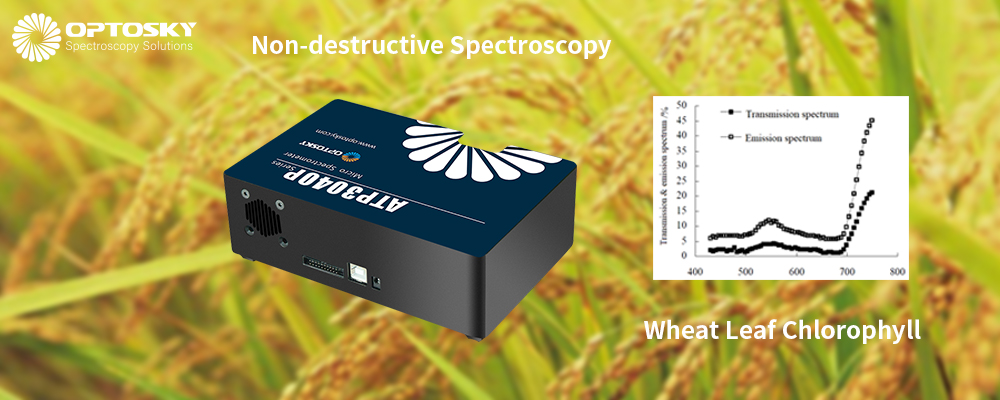Detecting Wheat Leaf Chlorophyll Content with Non-destructive Spectroscopy
As a large agricultural country, crop growth is constantly studied and monitored by many scholars. Therefore, Wang Xue et al. of Agricultural University of China used high-resolution micro-spectrometers to collect the reflection and transmission spectra of wheat leaves, and discussed the feasibility of using micro spectrometers to detect the chlorophyll content of plant leaves.
Chlorophyll content is an important factor affecting plant growth. At the same time, the growth status of crops is also observed. Therefore, timely and accurate detection of chlorophyll content of crops can monitor the growth of plants in China and evaluate the status of water and fertilizer. Wang Xue and others from China Agricultural University used high-resolution spectrometers to collect emission and transmission spectra, and applied partial least squares (PLS) to establish quantitative analysis models of chlorophyll content, reflection and transmission spectra of wheat leaves, and discussed the use of optical fibers. The feasibility of spectrometer to detect the chlorophyll content of plant leaves.
The sample came from the Shangzhuang Experimental Station of China Agricultural University, collecting 61 wheat leaves of the same growth period, different varieties, and different fertilization levels. The sample set is randomly divided into a calibration set and a test set, 48 of which are used as the correction set and 12 samples are used as the prediction set.
The wavelength range of the collected spectrometer is 200~1100 nm, and the sampling interval is 0.27 nm. Each sample is scanned 3 times and the average is taken as the spectrum of the sample. Remove the bands with greater influence of noise. According to the absorption of light by chlorophyll in the visible light region, the spectrum is studied in the 430~750 nm band. Figure 1 shows the reflection and transmission spectra of wheat leaves.
As the key of this experiment, a spectrometer with a variety of algorithms software is very important. Optosky recommend ATP3040 un-cooled low-noise spectrometer cover 200-1100nm, small size and inculde free software with a variety of pre-processing algorithms.



















Comments: 0
No comments